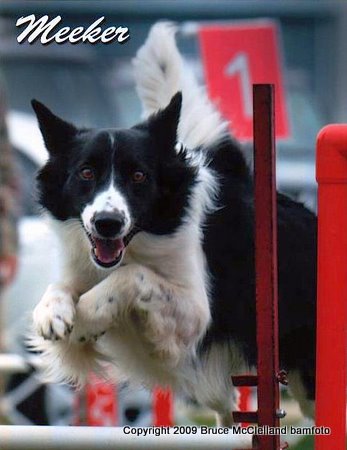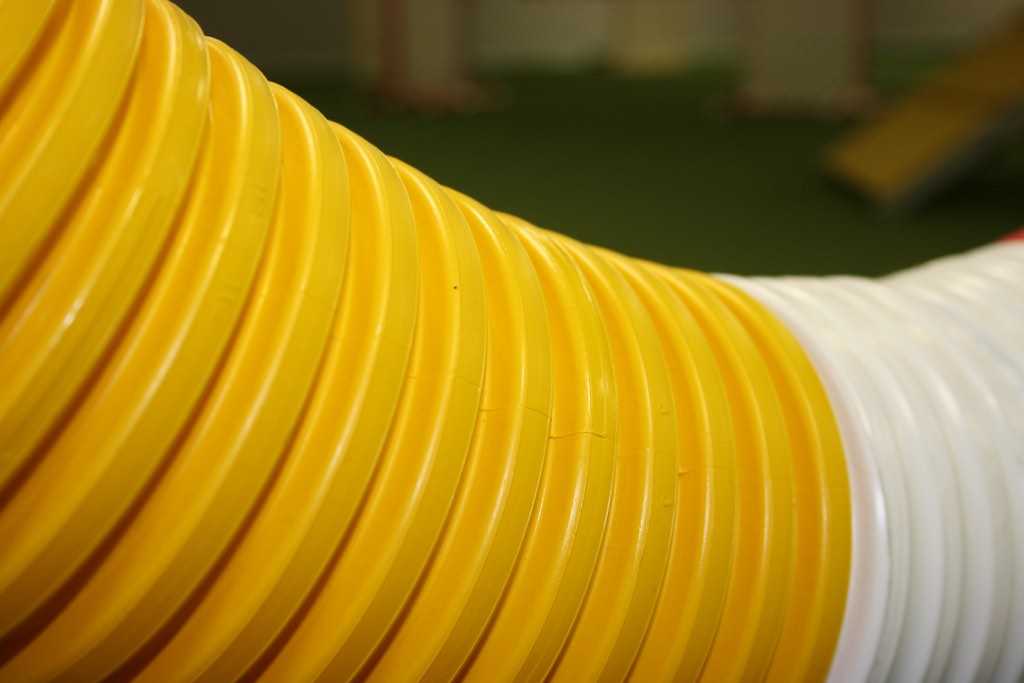Handling With Intensity
06 Jun 2012
For today’s Dog Agility Blog Action Day on the subject of “Attitude” I’ve written about the attitude I strive for when handling on course. For me the most important aspect of handling, next to using Proactive Handling, is bringing an intensity to my execution. What do I mean by intensity? It is a focus on what I need to do and a drive to do it.

For me handling with intensity involves:
- Stepping to the line confident that we have the skills needed to "beat" the course.
- Really knowing the course and the handling I will use - no doubts, no what-ifs.
- Getting to the places on course where I need to be - believing I can get there and driving myself to get there.
- Getting out of position as soon as my dog is committed and driving to my next location.
- Consciously connecting with my dog when I need his attention through out the course.
One reason I put time and effort into this sport is because I enjoy the feeling of my dog and me mastering the challenges of the course. I enjoy doing well on course. I also figure that every time our dogs step in to the ring they bring all they have to give; by handling with intensity I try to do the same.
So here are some of the things I do when running a course.
Preparation
It all begins before I bring my dog to the ring. I want to be completely prepared when it is time to run.
It may not be cool to walk a course “to death”. But if I really want to beat the course I will execute my plan over and over again during the walk through until I’m certain I know it. I’m doing it in a very specific way. I will have found the places I have to get to; where I need to be to correctly cue my dog through the tricky sections of the course. As people leave the walk through I’ll go faster and faster into that location executing the cues I plan to use during the actual run.
I am doing two things: first I’m making sure I am ending up in the correct location. For example, if I’m executing a Front Cross I’ll verify that I’m ending up on my Front Cross Line Using the Handler Line - Front/Rear/Blind Cross LineHandler Line - Front/Rear/Blind Cross Line and rotating out facing in the correct direction. If not I’ll keep repeating moving in and out of the cross until I’ve got it right. Second I’m reinforcing the physical motions that I’ll perform when I run the course. I’m trying to create not only the visual cues of where I will be but also a muscle memory of how the rotation feels when I cross correctly.
On a really twisty Jumpers course I’m might run the challenging sections a half dozen times at as fast a speed as I can without interfering with anyone else’s walk through.
Once runs start I’ll watch other similar dogs run the course and see if I missed something in my planning - I will almost never change my plan. But I might decide I need to add/remove cues to ensure our success. I will also “walk through” my motions on the side lines, both looking at the course and without looking to make sure I know my handling sequence.
Once my dog is warmed up I’ll get in line and look at the course and visually trace my path through the course again to make sure I still have the sequence firmly locked in my brain. This is especially useful when the walk through was hours before the run.
For more information on remembering courses and handling see my article on PAWS.
Running
This is the “pay off” for the preparation and when intensity really matters. When it is time to run the course I try to push everything else out of mind and have a narrow focus on executing, closely watching/cuing my dog and really driving myself to those points where I need to be. Handling still must balance where you need to be with providing the cues your dog needs when they need them. But as soon as my dog knows what is needed; I try to be unrelentingly driving forward to my next spot.
Because I don’t doubt my dog’s skills, or my plan, or my abilities to remember my plan I am only thinking about execution. So I’m just in a little handling “feedback loop”:
- Give cues to my dog to possibly alter his direction/speed
- Track my dog's new location/execution/commitment
- Locate and drive to my next spot
- Repeat
Handling with intensity means focusing entirely on the tasks in that feedback loop for the time it takes to run the course.
Results
Meeker really responds when I bring intensity to a run. He is faster, he is charged up. He can feel me putting my energy in to the run and it is almost as if I am putting that energy directly into him. It is soooo cooool! Even at seven years old he is still getting faster on course.A cynic might say: “But aren’t you supposed to have fun running the course?” For me handling with intensity is more than just fun, it is exhilarating! Especially when it is a hard sequence and I know I got where I needed to be and Meeker never had any question about what was next. We don’t have to place or qualify. But I have to have given it my full focus in preparation and execution.
Training
This handling attitude applies to training too. It can be hard to bring intensity to a training session; you know there is always another chance to try the sequence. But in the past few years I’ve been really trying to prepare and handle training sequences just like a trial sequence.
When training, the first run through the sequence is the one that really tests your handling skills. If you have an experienced dog they have learned at least part of the sequence after the first time through. Consequently, in subsequent runs through that sequence your handling might not be fully responsible for your success. That is why I try to treat that first run exactly like a trial course. It can be really hard after a long day at work, sitting in traffic on the way to class, late at night, etc. But I think of it like running that last course of a long weekend. So I almost “force” myself to go through the same preparation and execute with the same intensity as running at a trial. I think it is good practice. It also brings out more trial-like mistakes in my run so I can work on them in training. I use subsequent runs to experiment with alternate handling methods.
Recently I’ve been coaching some handlers having trouble running their young, fast dogs to adopt this handling attitude. They may have a rhythm in their handling with their older dogs that doesn’t match their new partner. Often they are “afraid” to drive to their next location on course because it can cue extension; and many young, fast dogs are just looking for reasons to extend and run faster… But the reality is you can be much more effective cuing collection if you get out ahead of your dog to be in position to give collection cues. As I like to say, once your dog is committed to an obstacle your job there is done - move on to where you need to be. Use that fraction of a second to get another step down course. Those steps add up and you’ll get to where you need to be. You still need to work the foundation skills with your dog, but you won’t always be handling from behind.
I hope I’ve given you an idea of what I mean by handling with intensity. I hope you’ve experienced that thrill in your runs. If you haven’t, I hope you will give your next run “your all” and feel the exhilaration for which I am always striving.
If you enjoyed this article won't you please:  Thanks!
Thanks!
